The more he feels without acting, the less he is able to act
Robbing Hood Gardens. Evil Dead II. A Brief History of Brit Comics 3: TRANSFORMERS. The Mediator between the Head and the Hands. Pricks Issue Five. Haunted: Thing One and Thing Two. All we talk about nowadays is Jayce, and his Wheeled Warriors. Screwrape Lettuce.
ITEM
Robbing Hood Gardens

At the V&A East Storehouse, a vast shed in the Olympic Park with reams of unseen exhibits. Safavid tilework. Pop art armchairs. An entire office designed by Frank Lloyd Wright. It’s a working archive, added to constantly, with items studied and cared for by onsite curators.
One of the biggest is a two-storey section of the façade of Robin Hood Gardens; council housing from the 60s, demolished piecemeal over the last decade, the last fragments gone just this March.
Designed by ‘the Smithsons’ – husband-and-wife architects Alison and Peter, fashionable in the 50s and 60s for concepts like ‘streets in the sky’ and ‘honesty of materials.’ Pals with Ballard, Paolozzi and the rest of the This Is Tomorrow crew at Whitechapel in 1956.
As well as the concrete façade, a front door and entrance lobby were salvaged. Behind them, a small gallery with a film about the building and its residents, telling a complex story before reminding us it has now been replaced by for-sale housing. A lot is left unsaid however.
Like when V&A Keeper of Architecture Christopher Turner and his boss, fellow Old Etonian Tristram Hunt - just after the Grenfell fire killed 72 people - hauled this postwar council housing show-pony to Venice Biennale, for . . . what? Likes and retweets?
Or when sociologist Jane Darke interviewed Alison Smithson about her design, only to be met with a racist rant. Smithson blamed ‘problem families’ for not living properly in her creation: ‘They stink of dogs and children … worse than a farmyard … they’d be far better off in Ireland on a peat bog, running about with chickens.’
Worth a visit, if only for the symbolism: we barely build council housing now, but its shattered remains make a fine museum piece for a rainy Saturday afternoon.
ITEM
The Vile Dead 2: Evil Dead II (Sam Raimi, Bruce Campbell, 1987)
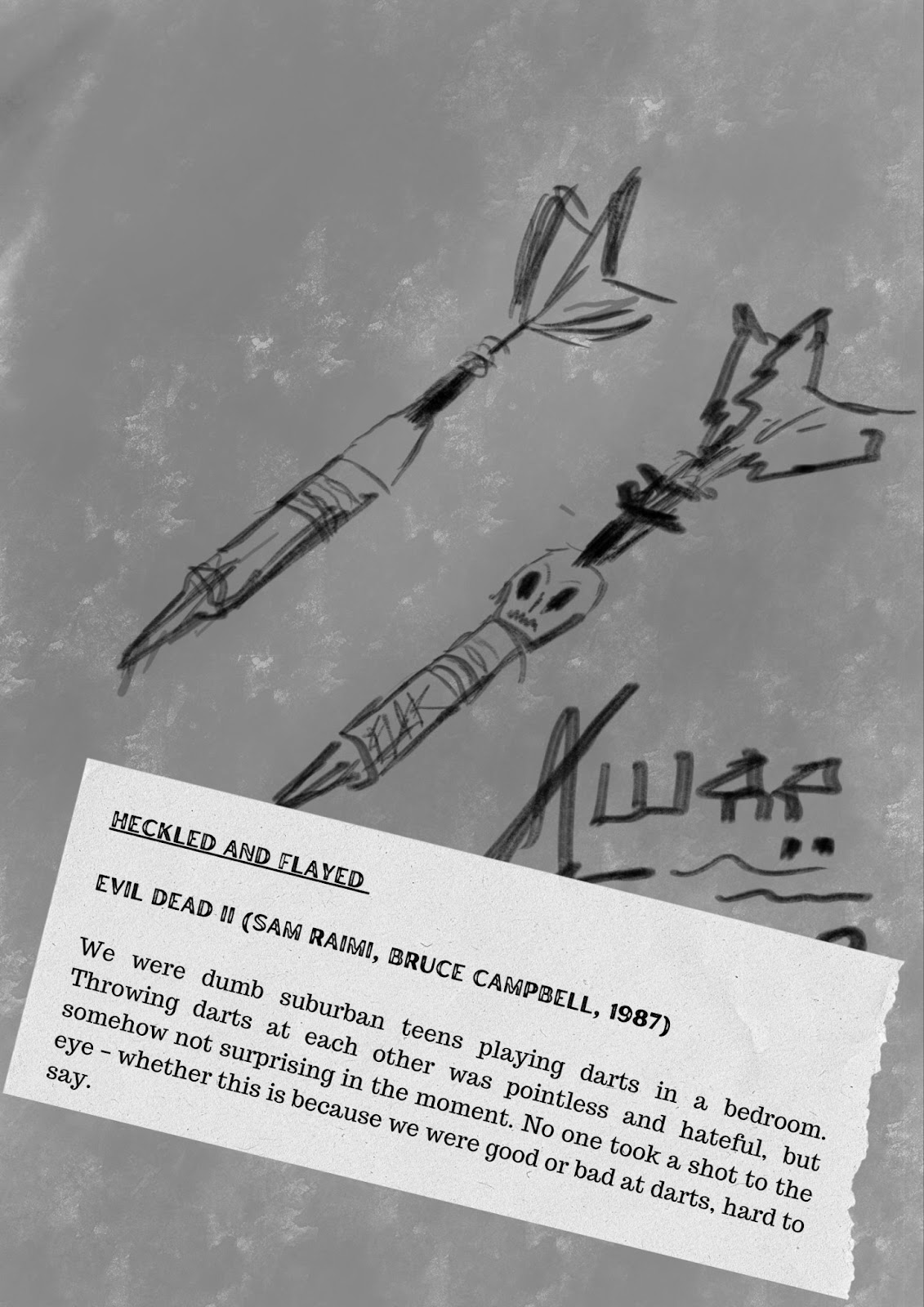
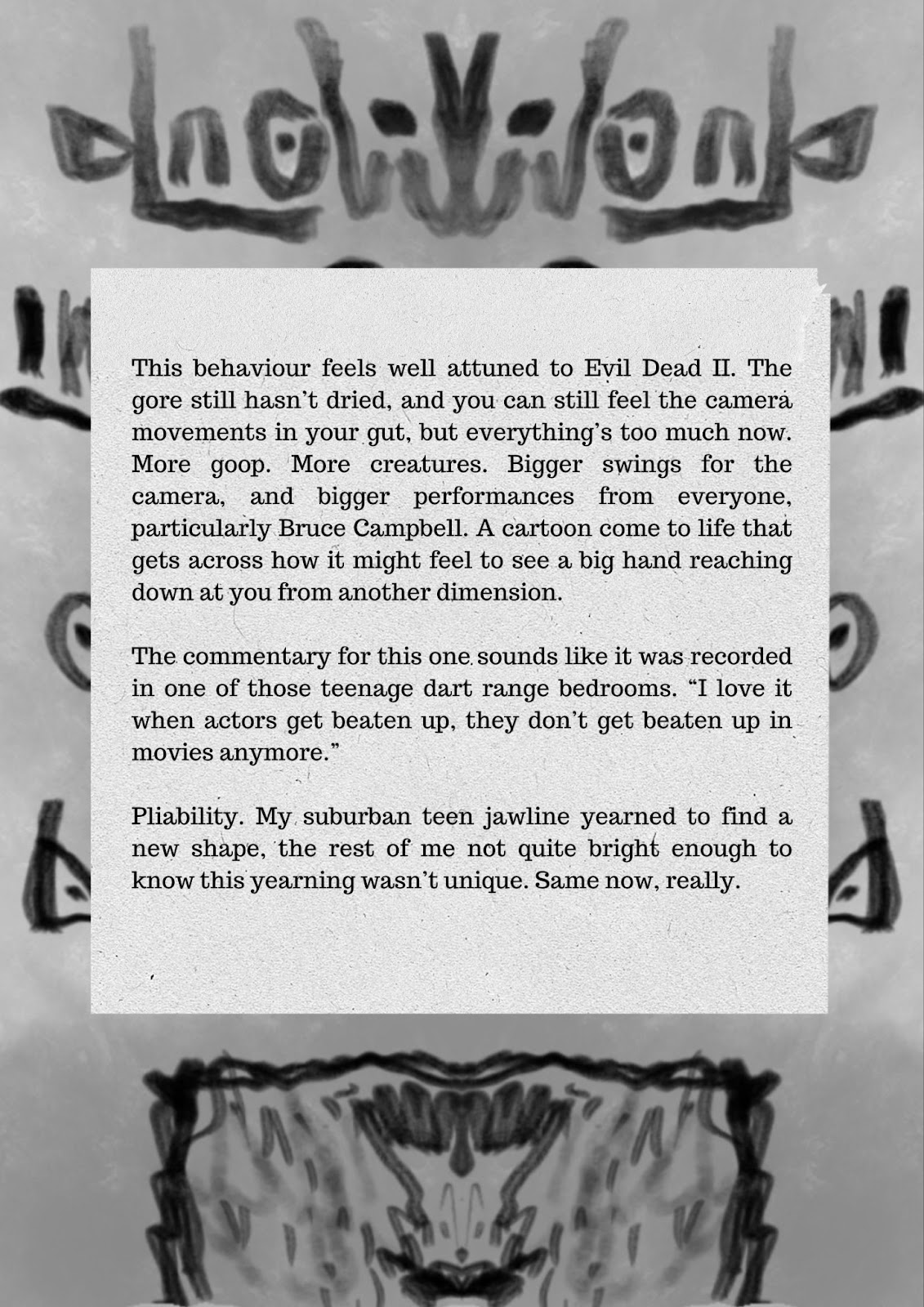
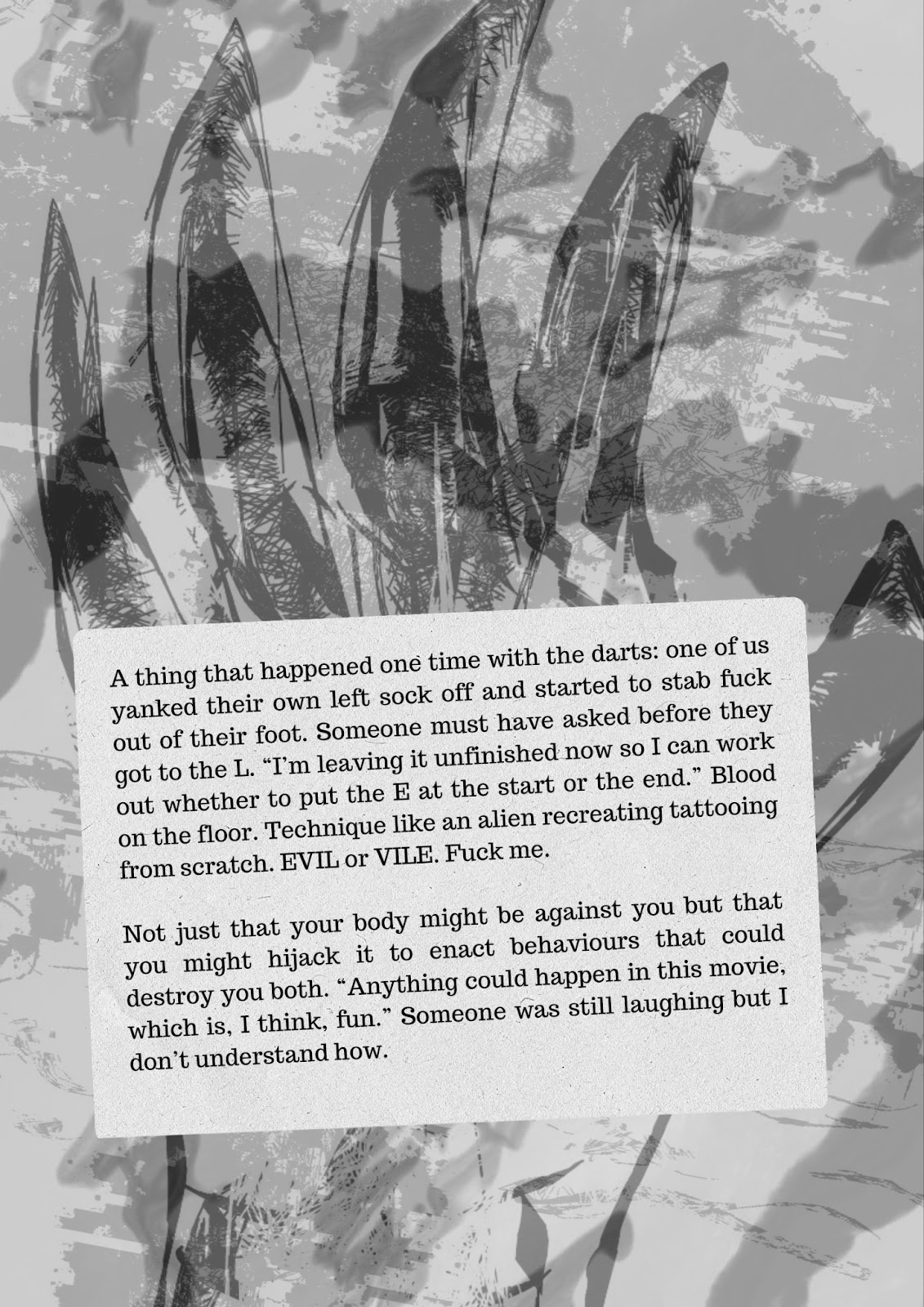
ITEM
Klaatu, barada, nikto
Tell just one person that you liked this newsletter. Word of mouth, more than any other form of promotion, is how creative works get noticed and sustain themselves. Thank you for reading.
ITEM
A Brief History of British Comics
3: TRANSFORMERS
- Publisher: Marvel UK
- September 1984 – July 1991
- 332 issues

Robots in disguise? Too right.
The UK Transformers weekly was truly one of the great comics smuggling acts. Under the aegis of a toy company solely interested in foisting the latest ranges onto a primed audience, the comic pulled off a miraculous meld of hermetic worldbuilding, insane melodrama and vibrant, kinetic action sequences.
Parents had no clue that this bright shiny toy tie-in comic harboured a soap-operatic saga of messy robotic bitches who lived for drama, topped off with lashings of lurid mecha-sadism.
Simon Furman, the prime architect of this beautiful folly, an exploitation film fan with a sure handle of the engines of pulp storytelling, took his remit and ran with it. Abetted by the striking imagery of a group of dynamic, hungry young artists including Bryan Hitch, Will Simpson, Dan Reed and the god-king of mechanical carnage, Geoff Senior, he wove a wild epic stretching from the Mesozoic era, up to the planet Cybertron and into the (then) far future of 2006. Stories incorporated the latest cash-in toy variants elegantly, populating the comic with colourful new forms, integrated into the sprawling narrative.
His true genius was to saddle the protagonists with hefty psychological baggage. Neurotic, ambitious, jealous, inadequate, narcissistic, vain robots wrestled for power in tangled webs of betrayal and conspiracy. Punctuated by audacious action sequences, with a vibrant pop art palette. All via the deeply important framework of robots that change into cars, planes, trucks, dinosaurs, insects, microscopes, guns, stereos, cities, space stations, planets, even giant humans. A polymorphous panoply of ridiculous invention for kids of the 80s to map their fears, frustrations and excitement onto, weekly.
It peaked with Time Wars, a Wagnerian orgy of time-warped mechanical destruction, the zenith of Furman’s fevered, knotty plotting. Transcending its cash-grab status to become something that mattered.
In disguise.
ITEM
The Mediator between the Head and the Hands Must be the Heart
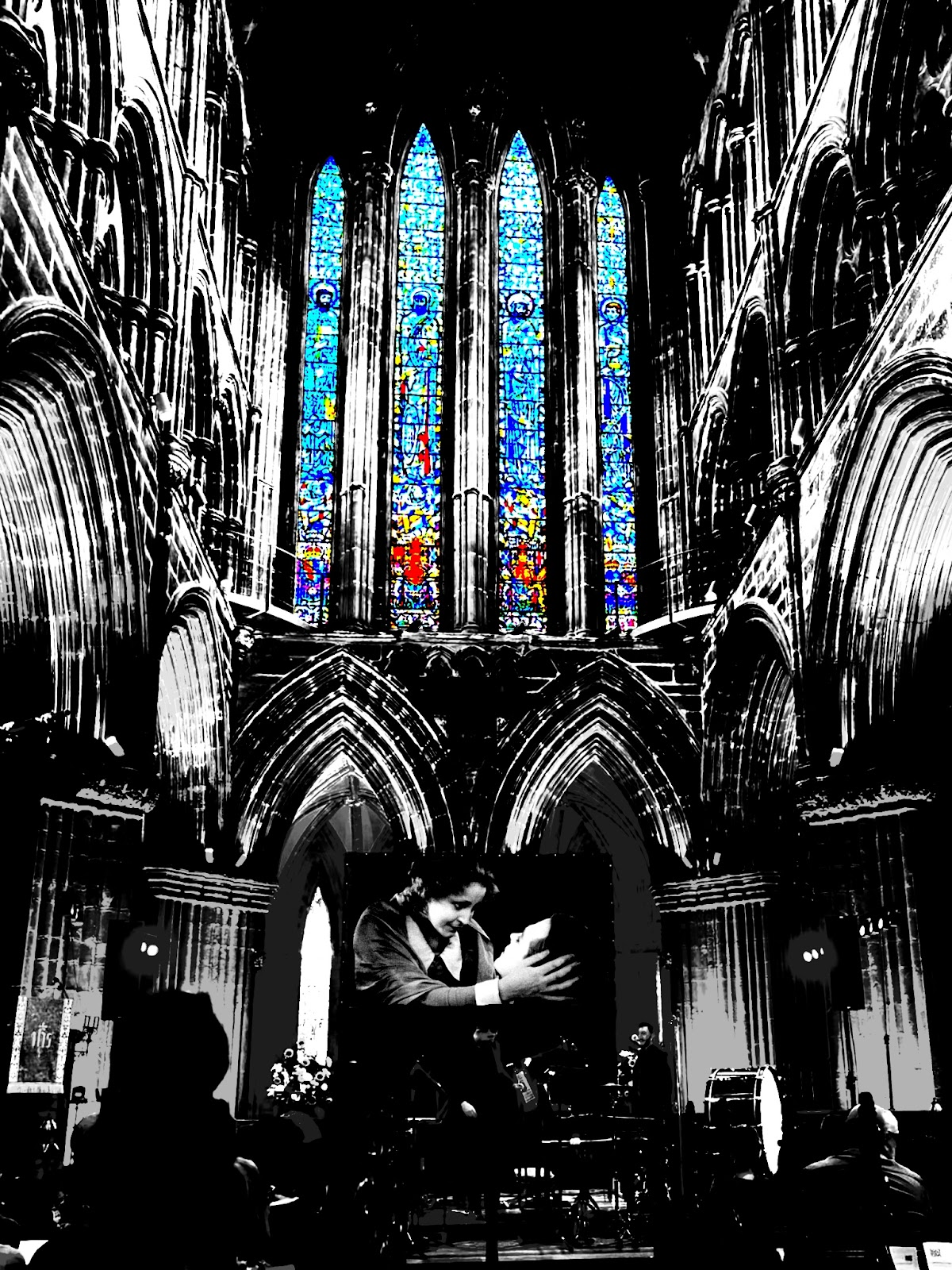
After I fucked up my highers, I went to college to try and buy myself some time to figure out what the fuck I was doing. Ended up on a Communications course and still miserable. The most enjoyable part was a module chunk focused on film adaptations of books to films. Conrad’s Heart of Darkness vs Apocalypse Now.
I was already familiar with Apocalypse Now. It featured in some kind of advertising campaign, either for the film itself, or perhaps later for the separate Film4 channel, that has led to an odd behavioural tic. When alone, having had the doorway/brain reset thing, I will look around, particularly to a mirror, and ask who’s in command here?
The screening of Apocalypse Now at college happened late in the afternoon, heavy brownish curtains struggling against the setting sun. The room was bathed in yellows. A sleepy, enclosed atmosphere set in. As the boat in the film encountered the ambush, the room seemed to be there. Spears launching past your head.
On the 21st of September, my wife and I attended a showing of Fritz Lang’s Metropolis at Glasgow Cathedral. I tried to prep for the changing weather, weary of my mum’s complaints that the services there are often freezing. This was the restored version, accompanied by live music, composed by Linda and Irene Buckley.
During the scene where Freder and Maria meet for the first time, the setting sun streamed through the cathedral’s windows, bathing the lovers in warm light. The kind of thing you’d try to avoid at home. In the gray gloom of Glasgow Cathedral it became magic.
An incredible evening, that almost saddens me to have because I know no other viewing of this gorgeous film can compete.
My mum was right though. Fuckin’ freezin’
Also, pews are hard on your arse.
ITEM
Pricks Issue Five
How did these circumstances arise?
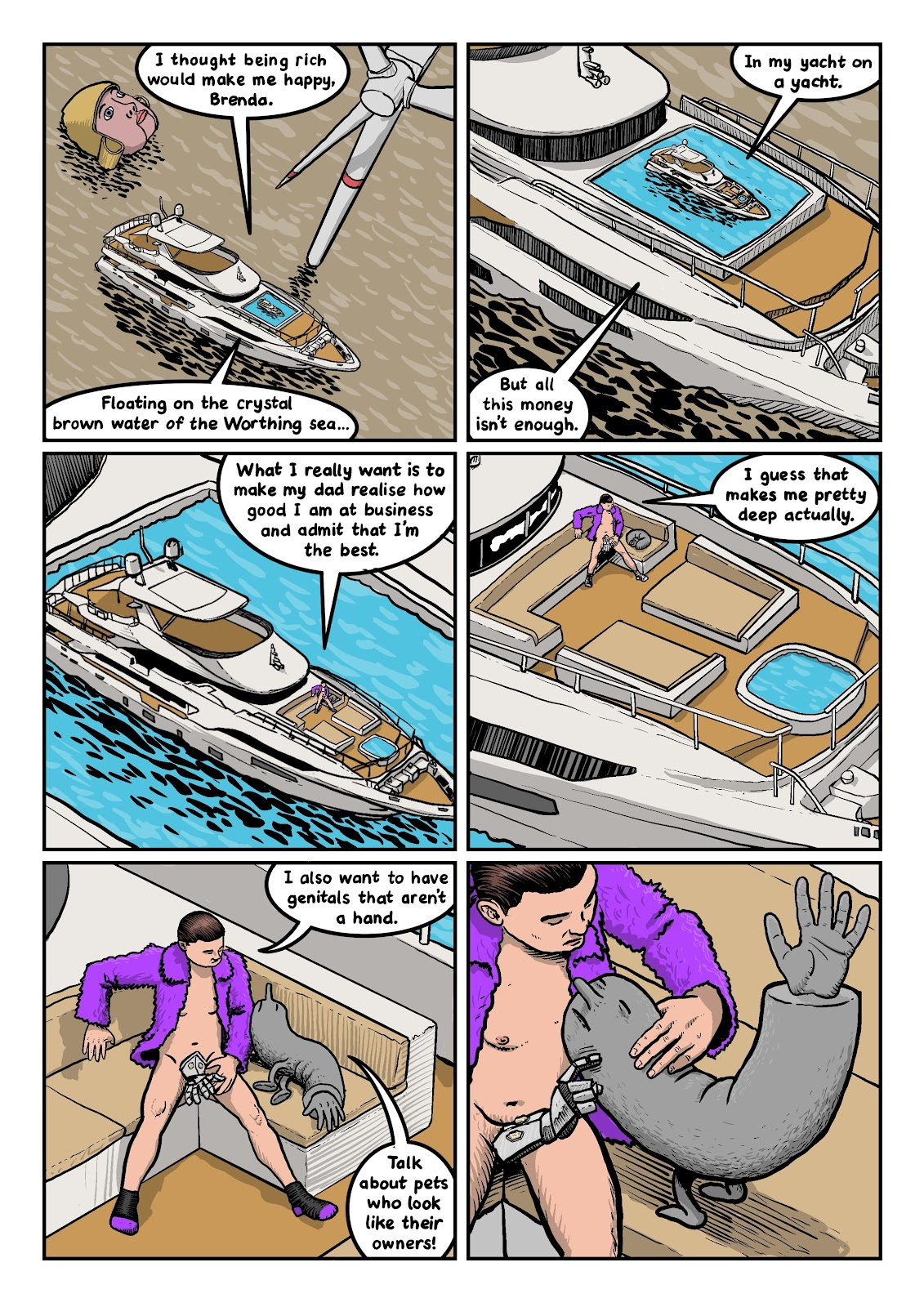
You can find out for pricey or cheap. You can help Pricks get finished too if you like.
ITEM
Haunted: Thing One and Thing Two.
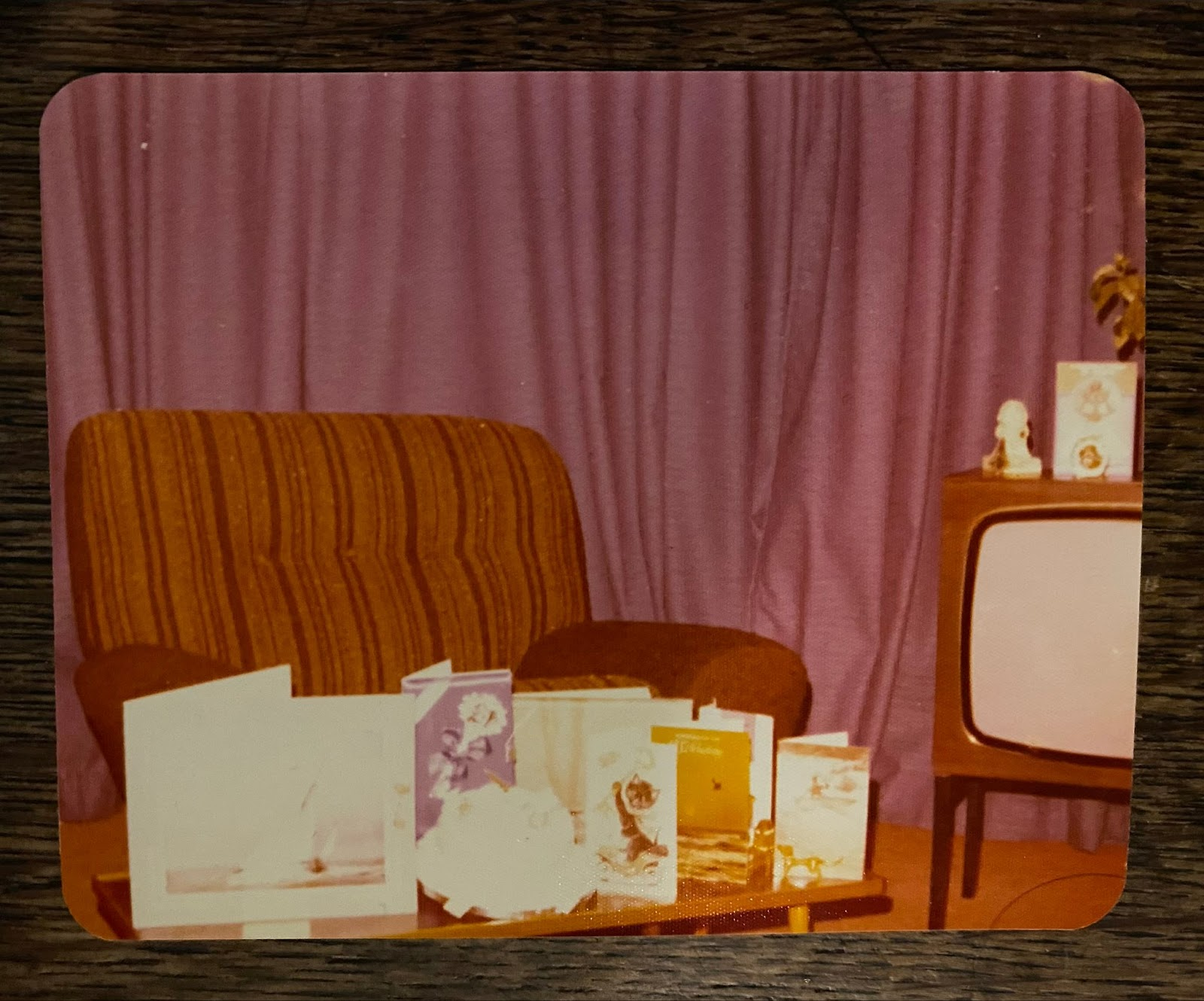
Dad needs some breakfast. He’s straight back after the funeral and doesn’t trust the buffet. I’ve led us astray thinking there were cafes up Seaview’s parade of hipsterised shops.
The Mersey is to our left.
“The first house you lived in is up here.” I don’t remember this. “What was it called, began with a B… no it must be the next one… ah, not a B… Osborne Road… yeah… that’s it. There was a room you didn’t like in there. You wouldn’t stick it. There was a… presence.”
As a Liverpudlian policeman my dad is not prone to flights of the mystic. But, you know. Catholic. Holy ghosts in the fabric. Every background is haunted.
He won’t expand.
“You just wouldn’t go in there. Wouldn’t stick it. There was some sort of…” he gropes for a better word “…presence.”
There was grief with the landlord. If a tenant got in his bad books he’d send his builders round.They’d do a bit of damage or a spot of burglary. There was an altercation over some renovations that significantly affected our kitchen’s ability to kitchen.
We moved out to the Woodchurch Estate, Birkenhead. Other side of the concrete poem of the M53. Modernist social housing. The hope of a better world. In the post war rush to build New Britain the people got forgotten and the social construction went awry. By the 1980s excelling in youth unemployment and heroin consumption.
We move into a police house. I’m schooled to pretend my dad is a fireman. You never say police. Long flat gardens, separated by wire and stakes. The slap of washing in the wind.
I don’t remember this bit either. It’s a family story. There’s times I’ll refuse to go in the garden because of the old lady standing there. Watching me. No one else can ever see her. Or at least no one who’ll admit to it.
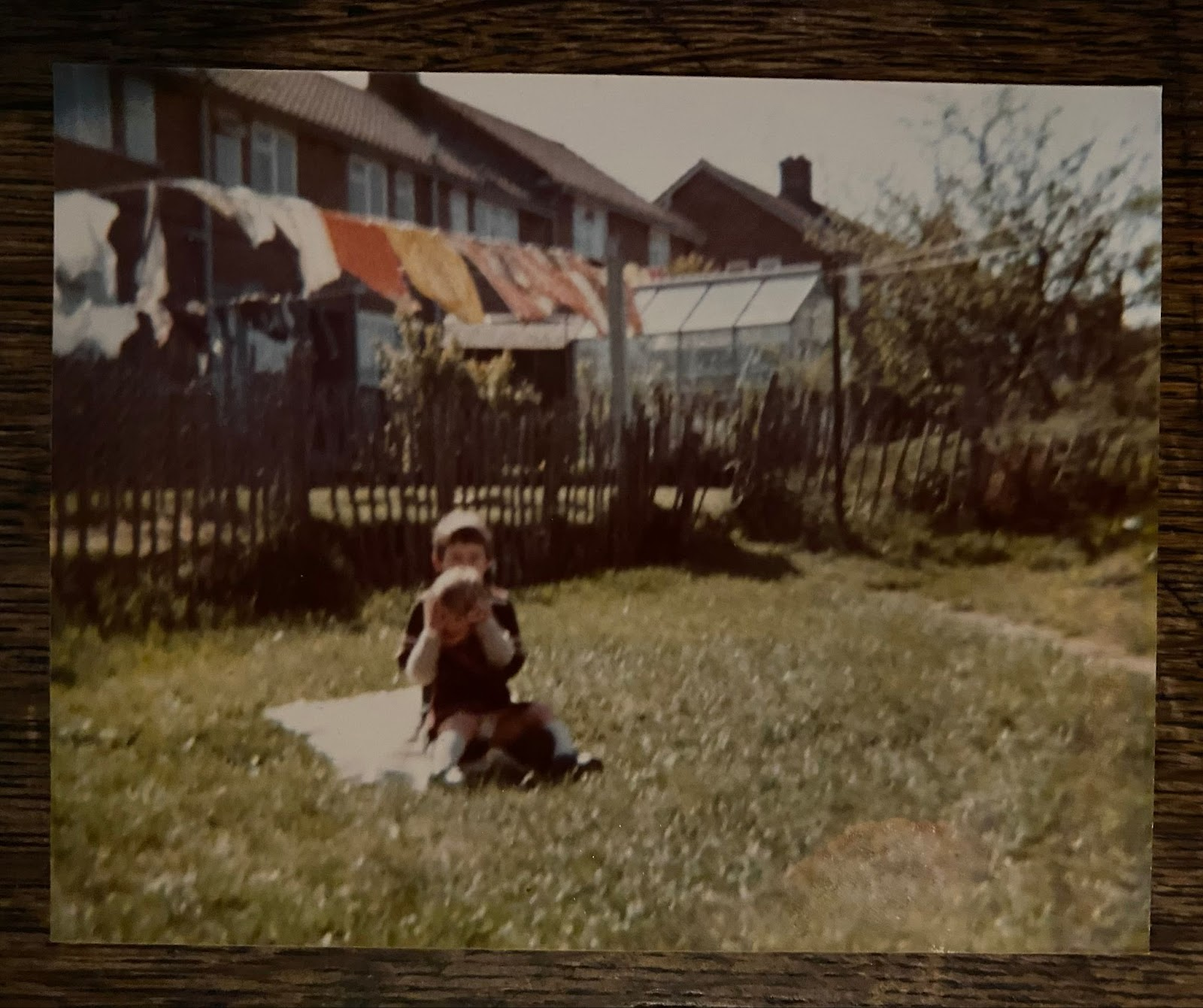
ITEM
All we talk about nowadays is Jayce, and his Wheeled Warriors
Clipse, John Legend, Voices of Fire, Pusha T, Malice - The Birds Don't Sing (Official Music Video)
As mentioned last week a foundational basis of this here is we lost our brother Mark, and it’s not a winsome grief that animates it, certainly speaking for myself and I see no evidence either but a loving rage, an attempt to renegotiate with the universe taking as a basis from his service - much of which I spent thinking the large stained glass window looked like a rocket from New Genesis - “his insistence ‘time was not real’” (I watched There Will Be Blood with him when I stayed in 2007/08, I watched One Battle After Another on Wednesday there; bookends)…an invocation of our missing part - can the kindly Aerialbots still combine without Slingshot - and so on, and so forth.
Vince Staples - Black&Blue (Audio)
“To the Heavens above, is it a mansion for thugs?
Where did Tupac and ‘em go?
Where Nipsey Hus’ and them go?
Swavey and Drakeo? Ricche and Slim Foe?
I spend a lot of my time missing our kinfolks
Put ‘em inside of a rhyme, hopin’ they live on”
The only good TED talk I ever saw — actually maybe Douglas Wolk illustrated one solely with Wolverine panels or something so the only other one, I haven’t watched loads & they seem annoying — was about fractal patterns in African settlements, in design and layout
Ron Eglash: The fractals at the heart of African designs
This one has it all true believers! Brian Eno! Calabashes! Geomancy!
Whilst we are talking about African geography I would like to mention my thesis that Wakanda is based on Timbuktu, Great Zimbabwe and probably Omdurman and/or Gao, cool, good.
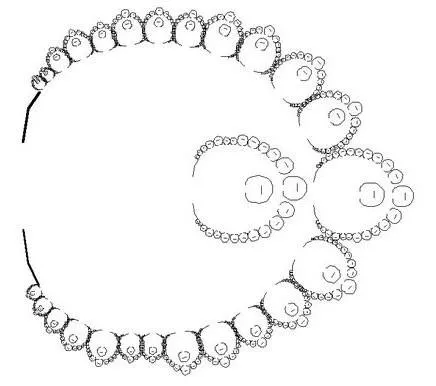
Anyway, the talk doesn’t really focus on what I think is the most interesting part - we haven’t really gotten into my numbers obsession or fixating on prime components as a mental tic yet readers but bear with - which is the notion of folding down time, something that parallels space travel in Dune, the fold-space - a rhyme is a bifold, I think there is something about fractal structures in programming or file management if I remember my Silicon Valley (I possibly do not, I remember the guy that fucks) that is essentially about [Dennis Reynolds voice] the implication… and in folding down time, refining the leaf shape legacy, the ancestor home.
JLA-exceeding feat to have the strength and wisdom to fold a piece of A4 paper 8x, so I reckon breaking down the walls of death probably harder but this is the plan.
Big L rest in peace Big L - The Enemy (Ft. Fat joe) (low-key premier Premier production?)
ITEM
Screwrape Lettuce by Jack Trevor Story (Savoy Books, 1979)
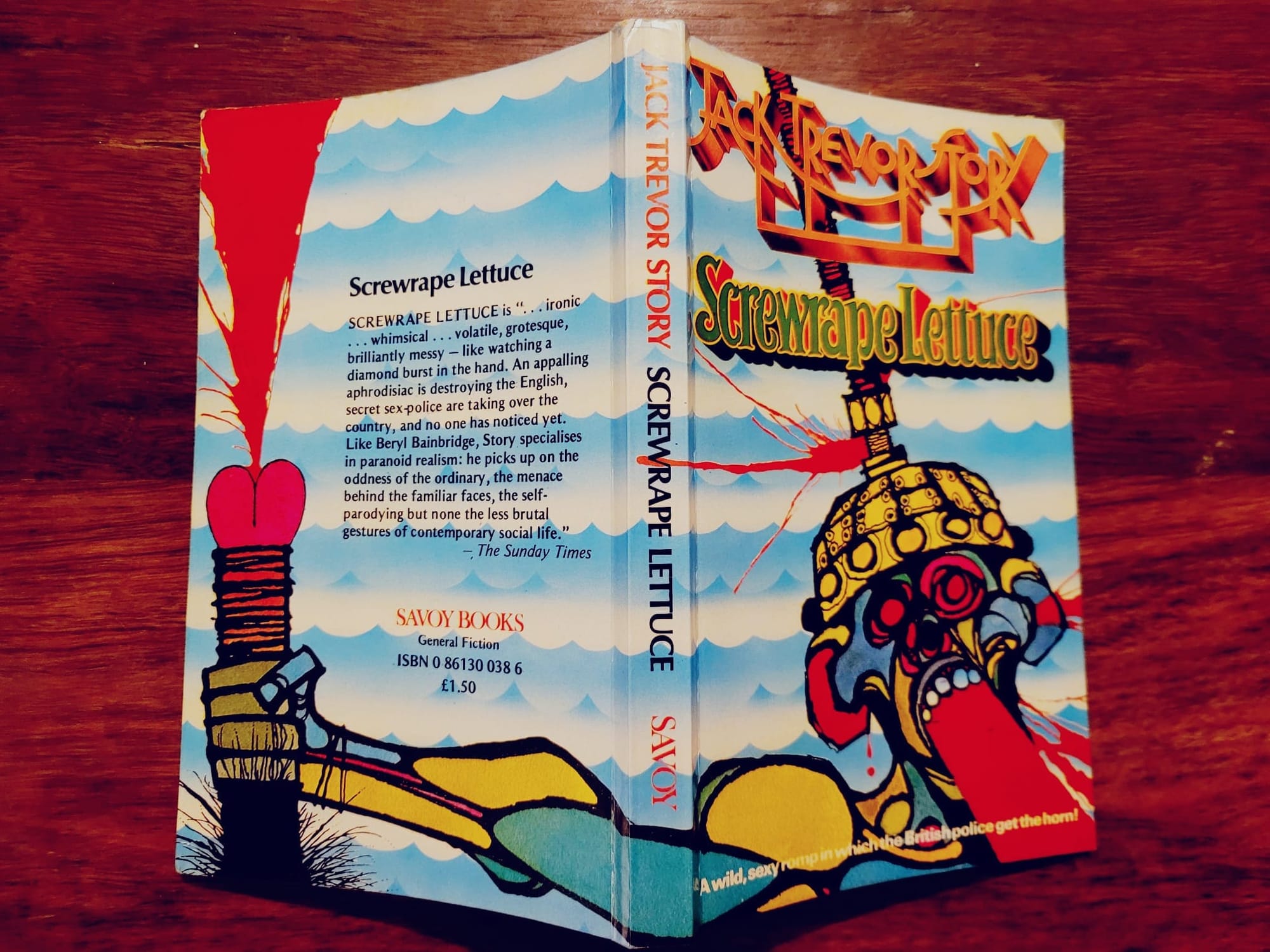
Books have minds of their own, their intentions to discover, and the question until Wednesday was: why this one this week? Until events revealed themselves.
Thanks for making it clear my little pigsnies.
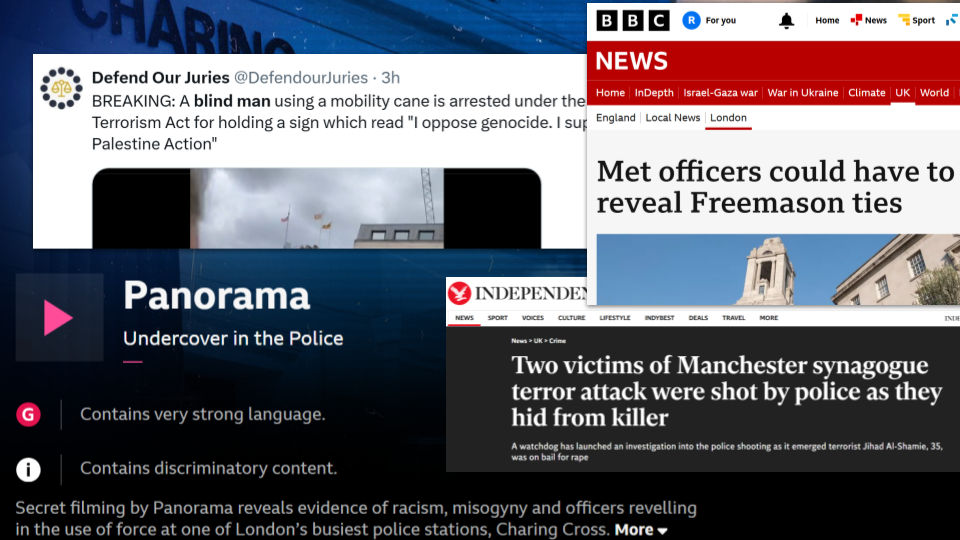
Jack Trevor Story always hated cops for helping the bailiffs take away the wireless, and especially ever since they left him with a permanent limp at the top of East Heath Road, two nights after Christmas, 1968, for having a Black girlfriend.
As that rage takes over, his final novel is a hot and sunny sex caper that quickly cools into a suburban derangement of paranoia and violence, with a seditious, mercurial energy that feels like it’s going to fall out of your hands. Our sailor-mouthed heroine Caroline Latimer - Official Receiver’s examiner, sex addict, gun owner, autist, CSA survivor, terrified spinster and, by the way, Oxford graduate - fucks her way into a police conspiracy where red lettuce from beyond the iron curtain is giving our brave bobbies a fatal case of the raging horn. She spends a beautiful summer weekend in July attempting to solve the mystery, bag a husband and cure her father’s impotence, while at the same time enduring not infrequent rapes, boating upriver to Godalming and trying not to be pressganged into Special Branch’s new joy division.
Part unstoppable monster, part hapless Britannia, Caroline is intrepid and unforgettable. Eventually, she falls in love with eerie Lady Di stand in ‘Lady Kate’... which is when you start to realise the pulsing logoplasm slipping through your fingers - a book that is trying not to see an obvious future, and in its self-deception highlighting certain tomorrows with a horrible clarity. Not only a great London book, a great Thames book and a great England book, its another lost classic appearing just before Thatcher’s shadow falls over the islands, with a curdling faith in free love as it starts to realise the cost, trying not to notice the organised epidemic of blue brutality lurking at Orgreave, or the Bean Field, or this afternoon.
